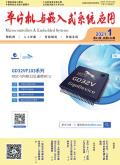Impact of Altitude of Anchors on Performance of UWB Real-Time Locating System
引用次数: 2
Abstract
Ultra-wideband (UWB) technology has recently improved the performance of real-time locating systems (RTLS) to centimeter-level accuracy. One of commercially available integrated circuits (IC) for UWB RTLS is from Decawave. Its DW1000 IC can be used in two-way ranging (TWR) method to measure precise time of flight, thus accurate estimation of the distance between an anchor and a tag. A trilateration algorithm can then estimate the position of a tag in two-dimensional (2-D) and three-dimensional (3-D) space from the distance between the tag and three or more anchors. In this work, the impact of altitude of anchors above the tag on the performance of a TWR UWB RTLS was studied. In the experiments, the anchors and tag were first placed on the first floor of a building. Then, some of the anchors were raised or moved to higher floors. The results revealed that the error distances along x-, y-, and z-axis varied differently with increasing altitude of the anchors, thus changing their contribution to the 2-D and 3-D performance. The results indicated that altitude of anchors dramatically affected the performance, especially in 3-D. The results can help suggest how to find optimal positions of anchors for deployment of the RTLS.锚点高度对超宽带实时定位系统性能的影响
超宽带(UWB)技术最近将实时定位系统(RTLS)的性能提高到厘米级精度。其中一种商用的UWB RTLS集成电路(IC)来自Decawave。其DW1000集成电路可用于双向测距(TWR)方法来测量精确的飞行时间,从而准确估计锚点与标签之间的距离。然后,三边测量算法可以根据标签与三个或更多锚点之间的距离估计标签在二维(2-D)和三维(3-D)空间中的位置。在这项工作中,研究了标签上方锚点高度对TWR UWB RTLS性能的影响。在实验中,锚和标签首先放置在建筑物的一楼。然后,一些锚被提升或移动到更高的楼层。结果表明,随着锚点高度的增加,沿x、y和z轴的误差距离会发生不同的变化,从而改变它们对二维和三维性能的贡献。结果表明,锚点的高度对锚点的性能有显著影响,尤其是在三维情况下。研究结果有助于为RTLS的部署找到最佳的锚点位置。
本文章由计算机程序翻译,如有差异,请以英文原文为准。
求助全文
约1分钟内获得全文
求助全文

 求助内容:
求助内容: 应助结果提醒方式:
应助结果提醒方式:


